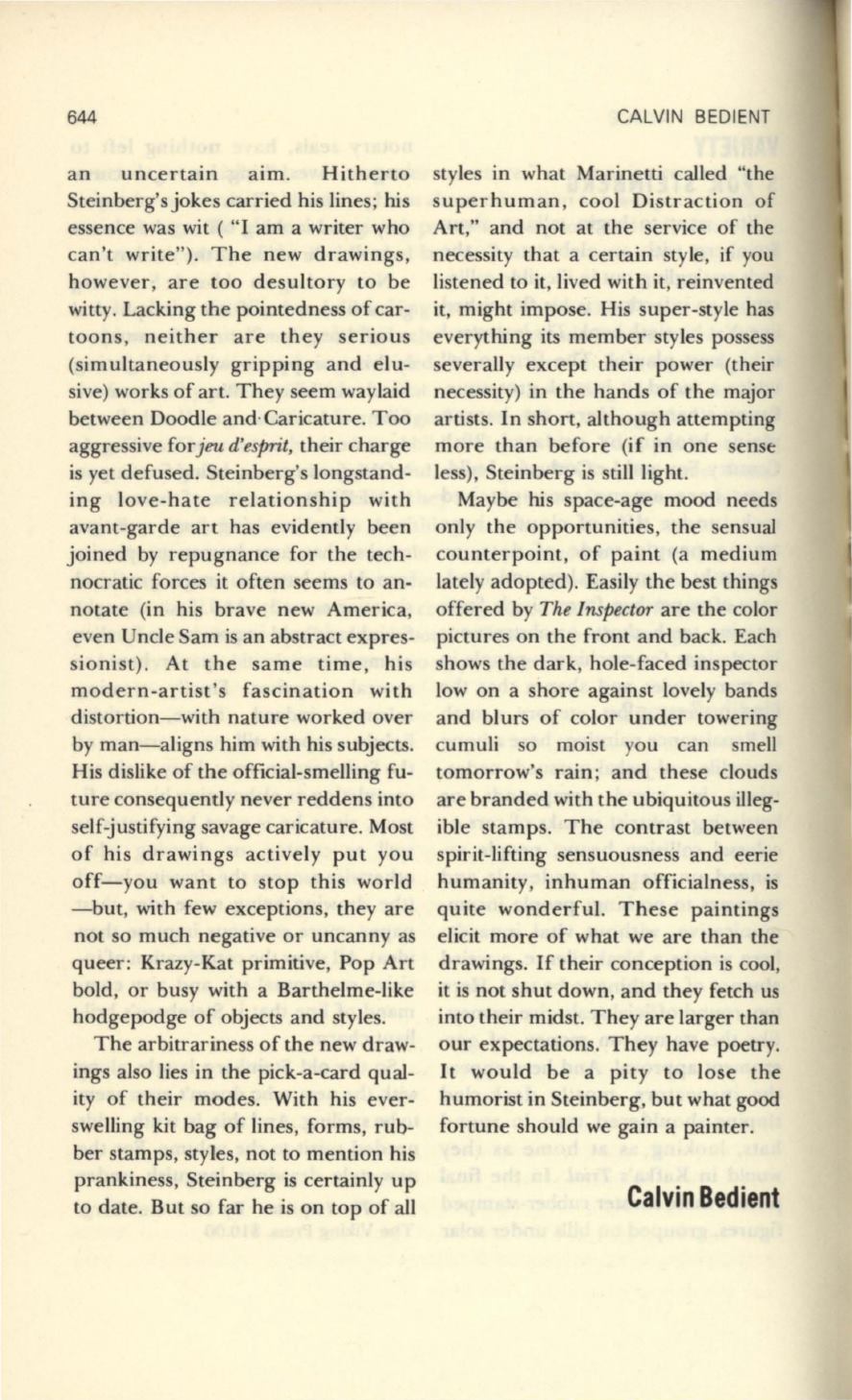
644
an uncertain aim. Hitherto
Steinberg's jokes carried his lines; his
essence was wit ( "I am a writer who
can't write"). The new drawings,
however, are too desultory to be
witty. Lacking the pointedness of car–
toons, neither are they serious
(simultaneously gripping and elu–
sive) works of art. They seem waylaid
between Doodle and· Caricature. Too
aggressive for
jeu d'esprit,
their charge
is yet defused. Steinberg'S longstand–
ing love-hate relationship with
avant-garde art has evidently been
joined by repugnance for the tech–
nocratic forces it often seems to an–
notate (in his brave new America,
even Uncle Sam
is
an abstract expres–
sionist). At the same time, his
modern-artist's fascination wi th
distortion-with nature worked over
by man-aligns him with his subjects.
His dislike of the official-smelling fu–
ture consequently never reddens into
self-justifying savage caricature. Most
of his drawings actively put you
off-you want to stop this world
-but, with few exceptions, they are
not so much negative or uncanny as
queer: Krazy-Kat primitive, Pop Art
bold, or busy with a Barthelme-like
hodgepodge of objects and styles.
The arbitrariness of the new draw–
ings also lies in the pick-a-card qual–
ity of their modes. With his ever–
swelling kit bag of lines, forms, rub–
ber stamps, styles, not to mention his
prankiness, Steinberg is certainly up
to date. But so far he is on top of all
CALVIN BEDIENT
styles in what Marinetti called "the
superhuman, cool Distraction of
Art," and not at the service of the
necessity that a certain style, if you
listened to it, lived with it, reinvented
it, might impose. His super-style has
everything its member styles possess
severally except their power (their
necessity) in the hands of the major
artists. In short, although attempting
more than before (if in one sense
less), Steinberg is still light.
Maybe his space-age mood needs
only the opportunities, the sensual
counterpoint, of paint (a medium
lately adopted). Easily the best things
offered by
The Inspector
are the color
pictures on the front and back. Each
shows the dark, hole-faced inspector
low on a shore against lovely bands
and blurs of color under towering
cumuli so moist you can smell
tomorrow's rain; and these clouds
are branded with the ubiquitous illeg–
ible stamps. The contrast between
spirit-lifting sensuousness and eerie
humanity, inhuman officialness, is
quite wonderful. These paintings
elicit more of what we are than the
drawings. If their conception is cool,
it is not shut down, and they fetch us
into their midst. They are larger than
our expectations. They have poetry.
It
would be a pi ty to lose the
humorist in Steinberg, but what good
fortune should we gain a painter.
Calvin Bedient


